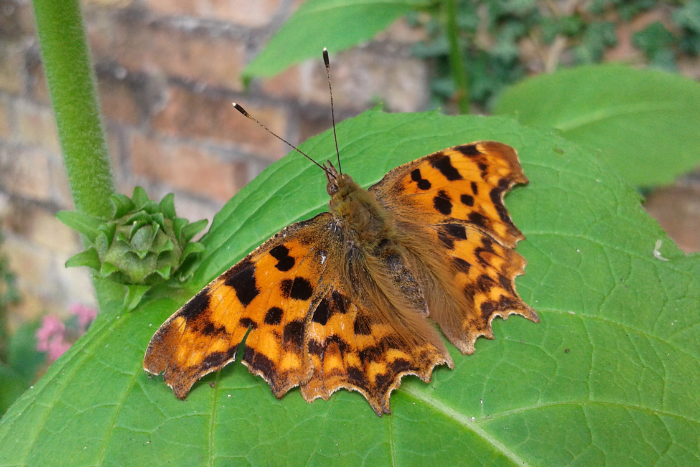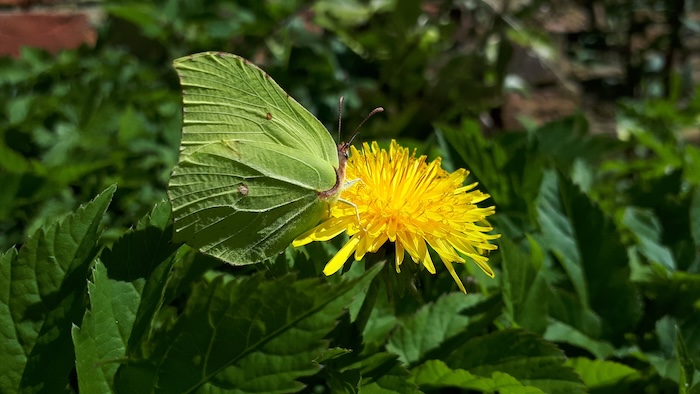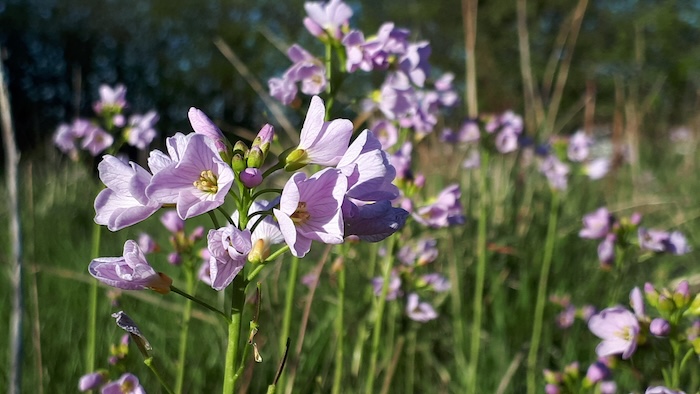
Fluttering signs of spring
By Rachel Shaw
Lincolnshire Wildlife Trust
The anticipation is always great at this time of year. The grey days, drizzle and downpours put a dampener on the expected proceedings of spring that perhaps make us yearn for it more.
On one of my lunchtime wanders the sun appeared from behind the clouds. Its rays shone down and woke up the invertebrate life – small insects took to the air, a large queen bumblebee bumbled past in search of much needed nectar and a flicker of orange caught my eye.
Off to my left a butterfly fluttered. Its wings flashed a bright burnt orange. A comma – the first butterfly that I’d seen this year. It briefly landed and I could see the underside of the wings and the small white comma-shaped mark that gives it its name.
There was still a chill in the air but this was a little sign of hope for the spring and summer to follow. The comma is one of the butterfly species that spends the winter in the adult winged form – rather than as an egg, caterpillar or chrysalis.
Peacock, small tortoiseshell, red admiral and the bright yellow brimstone, also overwinter as adults. Late last summer and into the autumn, they will have been feasting on nectar to build-up as much body fat as possible. They need this to make it through the harsh winter months when there is nothing to eat. Then they will have found a cool, dry and sheltered spot where they can wait it out. Sometimes they choose garden sheds or garages.
On the first sunny days of spring, these butterflies emerge. They can sometimes be seen on warm sunny days in February and even January. The first thing they need to do is replenish their energy by feeding on nectar. Plants that flower early in the year are vitally important for these butterflies and other insects including queen bumblebees that have spent the winter hibernating underground.
For other species, we have to wait a little longer. The next anticipated arrivals will be those that spent the winter as a chrysalis. Keep a look out for the holly blue, speckled wood, green-veined white and orange-tip.
The chrysalis is the life stage of the butterfly between caterpillar and adult. The caterpillars securely attached themselves to a stem, underside of a leaf, or maybe a sheltered garden wall and wrap themselves in a tough protective case. They are almost ready for flight but, depending on the weather, won’t be on the wing until April or perhaps May.
For me, it’s the orange-tip that is the true sign spring has arrived. They are a white butterfly and the male has bright orange tips to the wings. Adult butterflies will feed on the nectar of a wide range of flower species – they aren’t fussy. But the kids, they are the fussy ones! The caterpillars of each butterfly species, has specific food-plants that they eat.
Orange-tip caterpillars won’t eat your cabbages and they won’t eat nettles like the caterpillars of peacock and small tortoiseshells. The adult female orange-tip needs to find garlic mustard and cuckooflower. She’ll lay her eggs on those plants, so when her caterpillars hatch, they can eat the leaves.
When the orange-tips are taking to the wing, the cuckooflowers are opening their delicate pink flowers and, finger’s crossed, the cuckoos are calling. Then, we’ll know it is spring.


